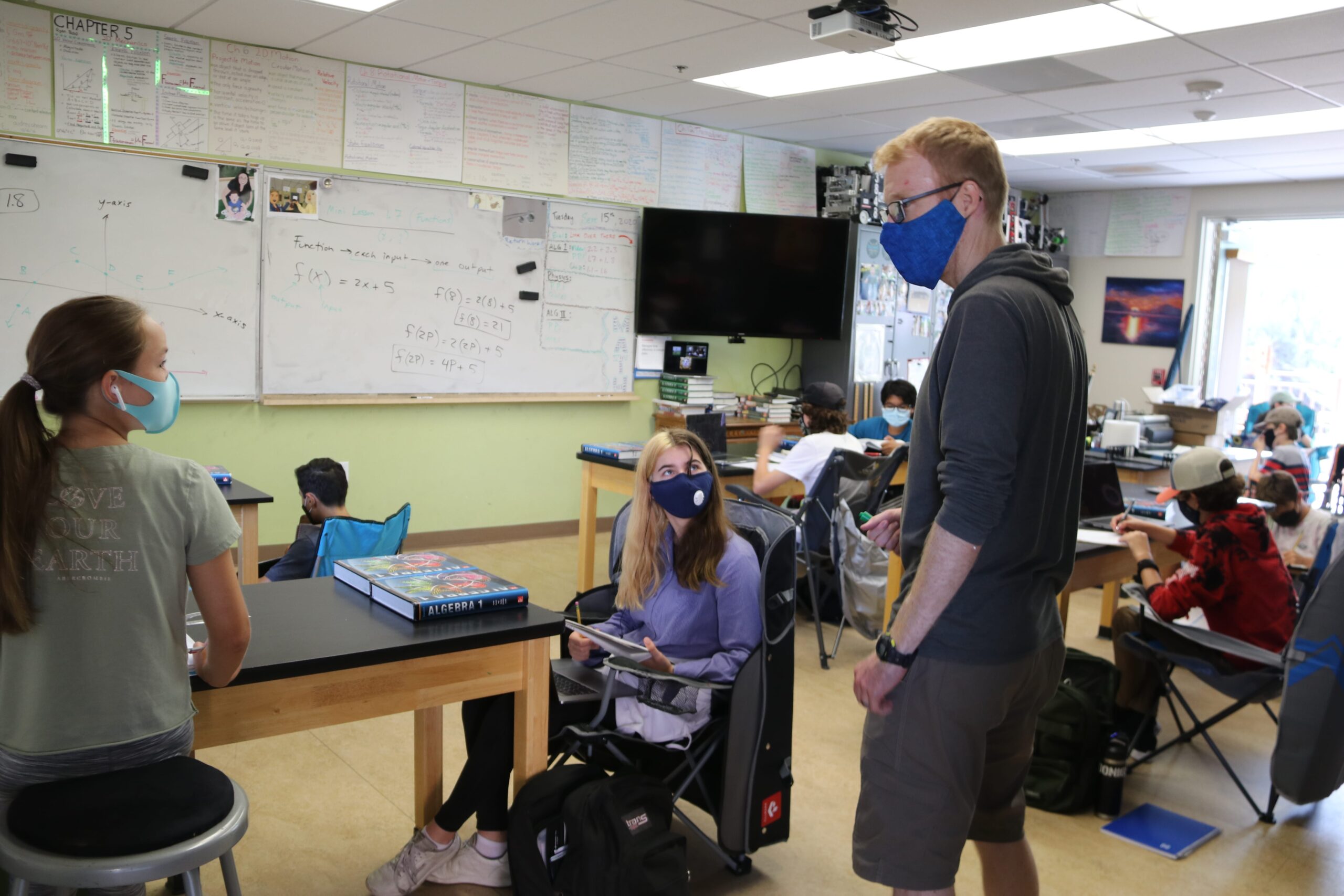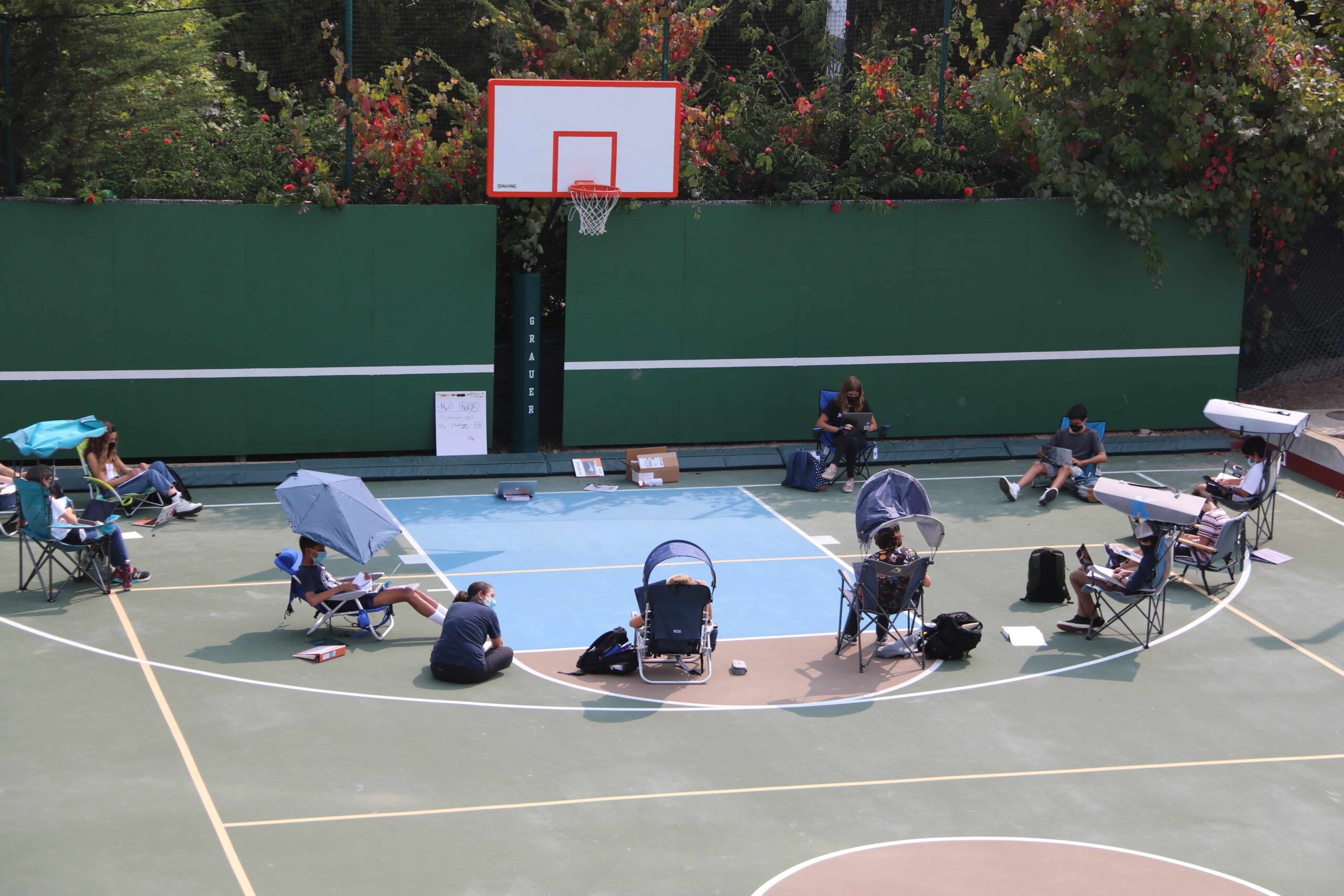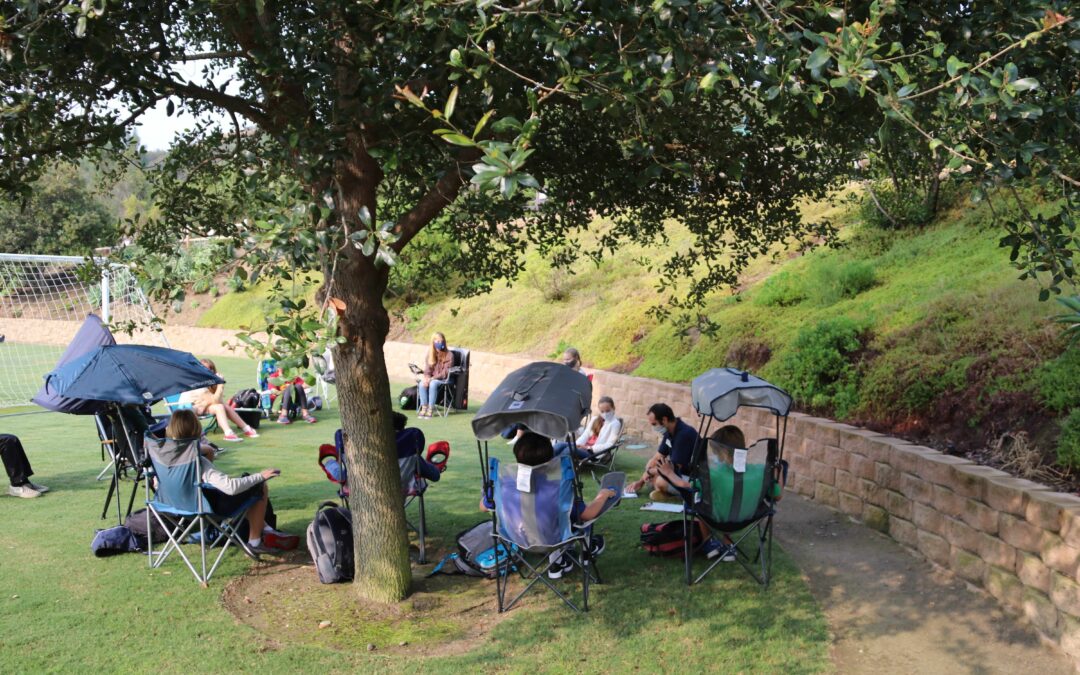The education community is experiencing an unprecedented situation. Methods of instruction and delivery have been thrown completely on their heads… while also turned upside down and backwards.
In the spirit of adversity breeding true human empowerment, we present the first piece in our “Coping with COVID-19” article series.
Over the coming months, we will learn how Small Schools Coalition members are maintaining their culture during the COVID pandemic. We hope you will take inspiration and, in all practicality, functional tips that can serve you, your friends, family, educational institution and ultimately, community-at-large.
Let’s hit the ground running… by speaking with Dr. Efrain Figueroa of the Grauer School in Encinitas California. Dr. Figueroa has extra special insight into how the Grauer School is coping with COVID-19. He is not only a sitting member of the Board of Trustees, he is also the proud parent of a Grauer student!
How has COVID-19 Impacted the Grauer School Community?

Dr. Figueroa, thank you so much for joining us.
You’re very welcome. Thank you for this opporutnity to discuss how Grauer School is operating under our current COVID-19 protocol conditions.
Generally, Regents do not get drawn into everyday on-campus affairs. How has the COVID-19 pandemic altered the role of Board of Regents at the Grauer School in Encinitas?
Although the Board is primarily concerned with long-term plans for the school, the pandemic has required us to also address short-term plans in support of the school’s administration, to be able to reopen the facilities for in-person instruction as soon as there is authorization to do so.
A preoccupation at our level is to provide the school with the tools and resources to protect students, faculty and staff while on campus. In the current COVID-19 landscape, this involves primarily the flexibility to decide on investing in air quality infrastructure and disinfection equipment, and to provide recommendations for pandemic-related regulations.
You are in a unique position at Grauer School, in that you do not only sit on the Board of Regents, but you also are the parent of a Grauer School student. Speaking primarily as a parent for a moment, can you tell us what you feel the largest challenge Grauer parents and students currently face?
The biggest challenge I have observed, this time speaking as a parent, is the limited social interaction that methods like remote classes on Zoom allows students. The Grauer School considers cultivating personal relations among students, faculty and staff to be an important part of daily activities, and this has been impacted by the pandemic.
This is an aspect that, in my opinion, remote instruction does not fully address, more so in subjects like theater, team sports and music ensembles. Such reduced social, in-person interaction is the driving force for reopening the school in a safe manner. With that interaction comes emotional stability and some sense of normality for the students.
Excellent points, thank you for sharing.
Merging Grauer School’s Culture with COVID Precautions

Let’s turn our attention to the all-important subject of safety for a moment. What methods has Grauer School put in place, or does Grauer School still plan to implement, in order to ensure safety; while providing the least interruption to your unique culture, and to the small school learning experience in general?
The pandemic has revealed with more clarity the advantages of small schools. Small class sizes have allowed us to adapt to the pandemic with relative ease. More importantly, small class size makes managing social distancing and taking advantage of outdoors and indoors space easier. Fortunately, contact with the outdoors and nature were already part of the school’s approach even before the pandemic, and such orientation is just reinforced with the current climate.
Still, introducing protocols for tracking students’ and faculty’s health every day, behavioral routines for students when on campus, enhancing equipment for indoors air purification, surface disinfection equipment, and installing outdoors stations for frequent washing are part of the methods the school uses to maintain a reasonable level of safety. This is in addition to the recommended guidelines from CDC regarding mask use and social distancing at all times.
Just as important has been engaging parents and the school community at large to ensure that students, staff and faculty maintain, to the best of their ability, the same general safety practices when away from campus. For example, each household pledges to avoid risky social gatherings and follow pandemic-related personal recommendations, such as wearing mask and hygiene in everyday life.
Outstanding advice! Piggybacking off of community, has the pandemic led to insight or innovation by faculty, admin, parents, students, or other members of the Grauer community that our members and friends worldwide can benefit from knowing about?
One area that comes to mind is providing both students and faculty the flexibility, when needed, of remotely delivering or receiving a class. In the current pandemic climate, this ensures that no student is left behind when circumstances require him/her staying at home. But I see this new-found flexibility useful even in non-pandemic situations. If for whatever reason a faculty or student cannot attend the school physically, there could be in the future the option of accessing classes remotely.
There is also a drive to optimize the outdoors area for teaching, using portable chairs and shades when the weather allows it. Students have also created simple mechanical levers for opening doors without using their hands, made with 3D printing technology. We shall be testing them soon.
Benefits of Small Schools Like Grauer During COVID-19

Your time is important and insight invaluable. Before we let you go, do you think small schools are better prepared than their larger counterparts to educate children based on the societal conditions we all may be living under for the foreseeable future?
The enormity of the challenges that large schools, both private and public, have had to endure is the best evidence of the advantages small schools have to prepare for situations like the current pandemic. The key is flexibility to provide an individualized level of instruction, which translates smoothly even to remote instruction.
Of course, a tangible advantage of small schools is the ability to maintain a low density of persons (social distancing) within each class and within the entire campus. But being able to dedicate enough time and attention to each student is a primary advantage that a large school would struggle to fulfill.
Excellent points! Dr, Figueroa, is there anything else you can share with our readers about the advantages small schools have over thelr larger counterparts at this time?
Perhaps the biggest asset the small school has is the sense of community and closeness among parents, grand-parents, faculty, staff and students. Ultimately, the community’s support is what allows the school to promptly put in action plans to confront crises like the current pandemic.
What a beautiful way to sum up this interview. On behalf of our friends everywhere, we thank you for your time.
Thank you.
How is Your Small School Coping With COVID-19?
Would you like to share how your school is coping with COVID-19 for the benefit of our friends, members and the educational commjunity at-large? If you are not a Small Schools Coalition member, join us totally free-of-charge.
If you are already a member, let’s get your school in the spotlight. Please stay safe inside and outside of the classroom!


Recent Comments